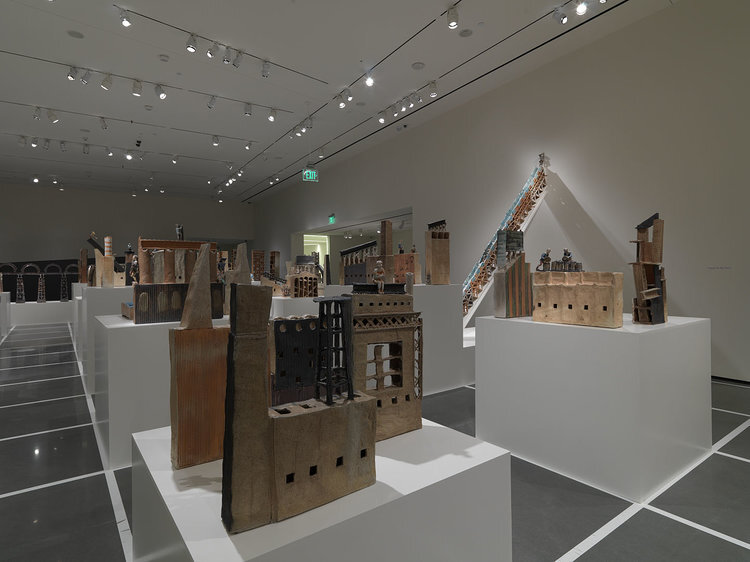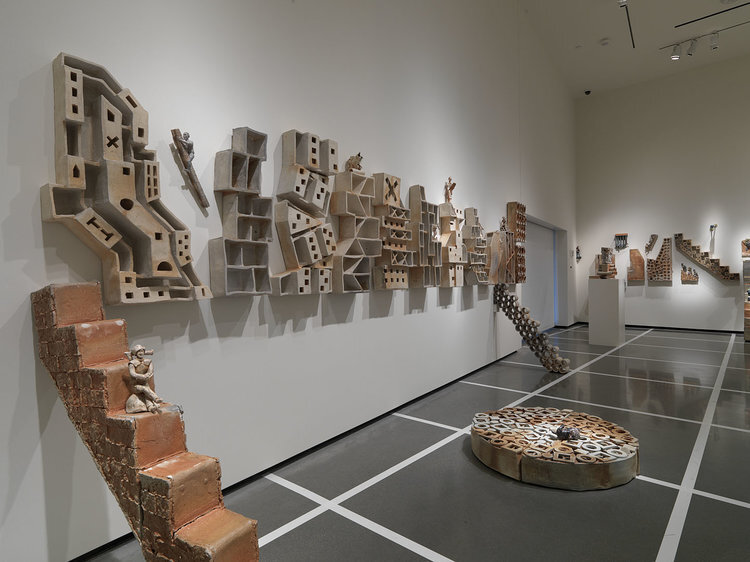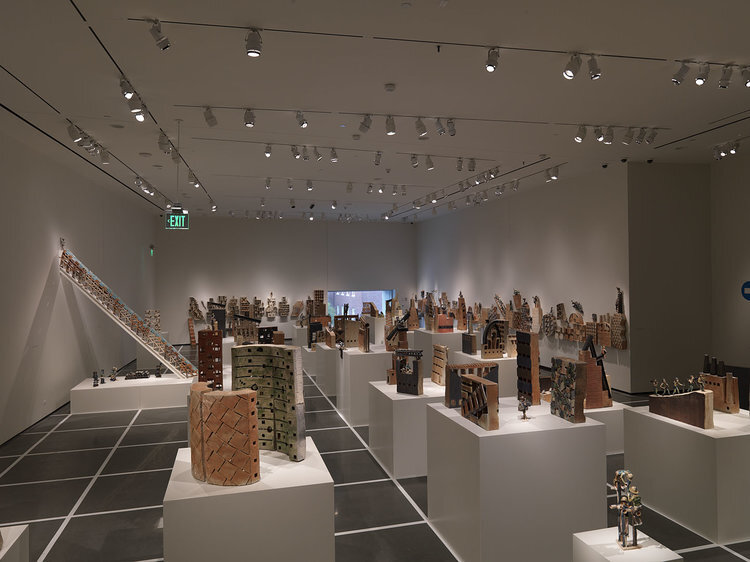Inner City Introduction
"Inner City" is an epic narrative of urban growth, decay, change and life itself. Comprised of more than 200 figurative and architectural parts, the installation's overall scale and form are variable - adapted to each exhibition site by Portuguese architect Tiago Montepegado.
Inner City Lisbon
Exhibited in 2007 at the Museu da Electricidade in Lisbon, Portugal as part of the Lisbon Architecture Triennial. It was produced by Ana Viegas. In Lisbon, architect Tiago Montepegado built interior walls and pedestals out of concrete blocks, a material and form that responded to the vast industrial building (a former power station) that houses the Electricity Museum.















Inner City Leeuwarden
Exhibited in 2008 at the Keramiekmuseum Princessehof, Leeuwarden, The Netherlands. Here, scaffolding and walkways suggested a typical construction site (the sculptural objects were arranged at angles to each other, in an orthogonal grid), dramatically transforming the neutral white cube of the museum gallery. This exhibition was organized by Ank Trumpie

























Inner City Providence
Exhibited in 2009 at the Museum of Art, Rhode Island School of Design, Providence RI. This incarnation of Inner City incorporated more than 30 new pieces, including two bridges that are each 10-ft long. Sprawled across a 4,000 sq.ft. space, the exhibition featured a ramp designed by Montepegado with a 4-ft high viewing platform where visitors could survey the panorama from a variety of perspectives. The city was organized in a grid pattern punctuated by pedestals of differing heights rising from the ground like buildings in a metropolis. This exhibition was organized by Judith Tannenbaum.



































Walled City
Walled City was exhibited at the Katonah Museum of Art, Katonah NY as part of the exhibition “Conversations in Clay” from October 2008-January 2009
“Walled City, an elaborate urban environment of interlocking walls and towers of brick and terra cotta, portrays a bleak and unforgiving industrial apocalypse. The materiality of earthenware clay and its long association with human civilization are central to the humanity projected by Arnie Zimmerman’s scenes and seemingly meaningless toil. In Walled City his figures labor anonymously, cast into a nameless urban environment whose walls merge with those of the gallery.” - excerpted from exhibition catalog essay by Ursula Ilse-Neuman and Janet Kardon







